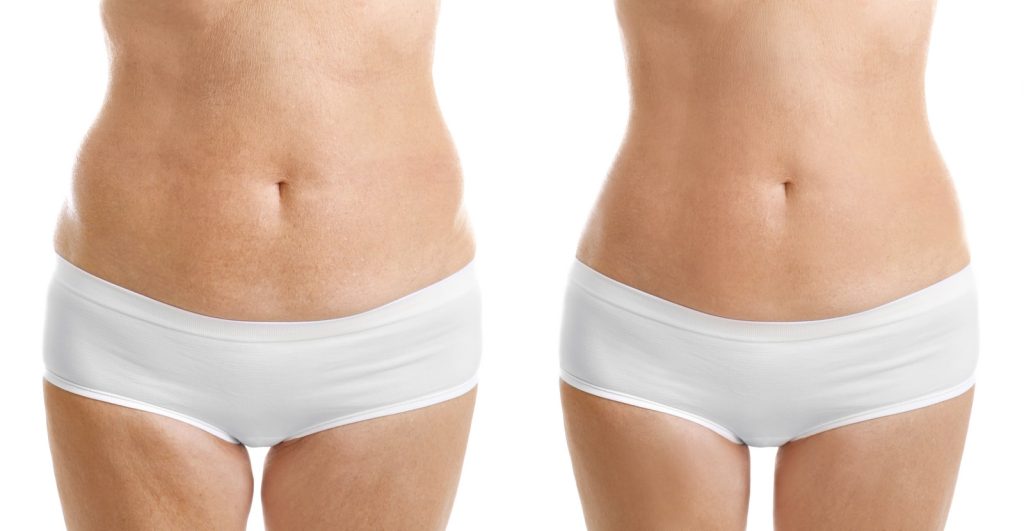Ultrasound-assisted lipoplasty (UAL), a liposuction technique, stands out in the world of body contouring compared to classic liposuction and tumescent liposuction, offering advantages over limited liposuction. Unlike traditional liposuction, UAL uses sound waves to break down fat cells for advanced body contour. This method uses suction for advanced body techniques that lead to less bruising and faster recovery times. Many people find it more effective to use advanced body suction for stubborn fat areas.
Patients often experience smoother results without the long downtime associated with older suction techniques. UAL not only targets fat through suction but also tightens the skin, giving a more youthful appearance. Those seeking a modern approach to body sculpting with suction will find UAL to be a game-changer. It combines safety, efficiency, suction, and impressive outcomes, making it an appealing choice for many.
Understanding Ultrasound-Assisted Lipoplasty
Definition
Ultrasound-assisted lipoplasty (UAL) is a modern enhancement of traditional liposuction. This technique combines the principles of liposuction with ultrasound technology. It allows for more precise fat removal while minimizing damage to surrounding tissues. UAL is gaining popularity for its effectiveness in body contouring.
Mechanism
ndwaves play a crucial role in UAL. The procedure uses ultrasonic energy to liquefy fat cells before extraction. This process makes it easier to remove fat from specific areas. The soundwaves create vibrations that disrupt the fat cell membranes. As a result, the fat turns into a liquid state, allowing for smoother extraction.
Purpose
UAL focuses on aesthetic fat reduction rather than weight loss. It targets stubborn areas of fat that do not respond to diet and exercise. Common treatment areas include the abdomen, thighs, and arms. Patients should have realistic expectations about the results. UAL helps improve body shape but is not a substitute for weight management.
Advantages
Several benefits come with choosing UAL over traditional methods.
-
Less trauma: The use of soundwaves reduces trauma to surrounding tissues.
-
Faster recovery: Patients often experience less swelling and bruising.
-
Precision: Surgeons can sculpt the body more accurately.
These advantages make UAL an appealing option for many individuals seeking cosmetic improvement.
Considerations
Patients should consult with a qualified plastic surgeon before undergoing UAL. A thorough assessment will determine if they are suitable candidates for the procedure. Factors like overall health and skin elasticity play significant roles in eligibility. Understanding potential risks and complications is also essential.
Post-Procedure Care
After the UAL procedure, patients need to follow specific care guidelines. Proper aftercare promotes healing and enhances results. Surgeons typically recommend wearing compression garments to reduce swelling. Staying hydrated and following a balanced diet aids recovery as well.
How UAL Differs from Traditional Liposuction
Soundwave Technology
A soundwave-emitting cannula is a key feature of ultrasound-assisted lipoplasty (UAL). This device uses ultrasound waves to break down fat cells. Traditional liposuction relies on manual suction techniques, which can cause more trauma to surrounding tissues.
The sound energy in UAL targets fat specifically. It disrupts fat cell membranes while preserving nearby blood vessels and nerves. This precision leads to less bleeding and bruising compared to traditional methods.
Reduced Tissue Damage
Less tissue damage is another significant advantage of UAL. In traditional liposuction, the physical manipulation can lead to more swelling and pain post-surgery. UAL minimizes these effects due to its gentle approach.
Patients often experience quicker healing times with UAL. Many report returning to their normal activities sooner than those who underwent traditional liposuction. This faster recovery can improve overall satisfaction with the procedure.
Collagen Stimulation
Collagen stimulation is an additional benefit of UAL. The ultrasound waves not only remove fat but also promote collagen production in the skin. This process helps improve skin tightness and contour after surgery.
In contrast, traditional liposuction does not inherently stimulate collagen production. As a result, patients may notice looser skin following their procedure. UAL offers a dual benefit: fat removal and enhanced skin elasticity.
Patient Experience
Patient experiences vary between UAL and traditional liposuction. Many individuals prefer UAL for its less invasive nature. They appreciate the reduced discomfort during recovery and the improved skin appearance afterward.
Surgeons also favor UAL for its precision. The ability to target fat without damaging surrounding tissues leads to better outcomes. Fewer complications arise, which enhances patient safety.
Ideal Candidates for UAL
Stubborn Fat Pockets
Individuals with stubborn fat pockets are often the best candidates for ultrasound-assisted lipoplasty (UAL). These are areas where fat remains despite diet and exercise. Common trouble spots include the abdomen, thighs, and arms. UAL can effectively target these areas and provide smoother results than traditional methods.

People should understand that UAL is not a weight-loss solution. Instead, it is designed for body contouring. Those who are near their ideal weight but struggle with specific fat deposits will benefit the most. The procedure helps sculpt the body by removing fat in a controlled manner.
Overall Health
Good overall health is crucial for potential candidates. Individuals should be free of serious medical conditions that could complicate surgery. Conditions like heart disease or diabetes can increase risks during the procedure. A thorough medical evaluation is necessary before proceeding with UAL.
Candidates must also maintain a stable weight. Rapid weight fluctuations can affect the results of lipoplasty. It is advisable to be at a healthy weight for at least six months before considering the procedure.
Realistic Expectations
Having realistic expectations about UAL results is essential. People should understand what the procedure can and cannot achieve. UAL can enhance body contours but won’t create perfection. It is important to discuss goals with a qualified surgeon.
Surgeons often emphasize that results vary from person to person. Factors such as skin elasticity and body type play significant roles in outcomes. Candidates should prepare for potential changes in their bodies over time as well.
In many cases, people may require more than one session to achieve desired results. Understanding this helps set achievable goals and reduces disappointment after the procedure.
Consultation Process
The consultation process plays a vital role in determining candidacy for UAL. During this meeting, surgeons assess individual needs and concerns. They review medical history and perform physical examinations. This information helps them decide if UAL is suitable for each person.
Surgeons also explain the entire procedure, including risks and recovery times. Open communication ensures that candidates feel comfortable moving forward.
Benefits of Ultrasonic-Assisted Liposuction
Less Discomfort
Ultrasonic liposuction minimizes discomfort during and after the procedure. The ultrasound liquefies fat, which reduces the amount of force needed to remove it. This technique causes less tissue damage compared to traditional liposuction methods. As a result, patients experience fewer bruises and swelling.
Doctors often note that patients report a more comfortable recovery. With reduced trauma to surrounding tissues, pain levels tend to be lower. Many individuals appreciate this aspect, as it leads to a better overall experience.
Quicker Recovery
Recovery time is another significant benefit of ultrasonic liposculpturing. Many patients find they can return to their daily activities sooner than with standard liposuction techniques. Traditional liposuction often requires longer downtime due to more extensive tissue damage.
Ultrasound-assisted liposuction allows for a faster healing process. Studies indicate that patients may resume normal activities within days rather than weeks. This quicker recovery appeals to those with busy lifestyles or work commitments.
Skin Tightening
Another advantage of ultrasound liposuction is its ability to promote skin tightening. The procedure stimulates collagen production in the treated areas. Increased collagen helps improve skin elasticity and firmness.
Patients often notice smoother skin after the procedure. This effect is particularly beneficial for those concerned about loose skin following fat removal. The combination of fat reduction and skin tightening creates a more contoured appearance.
Many people seeking body sculpting options prefer this dual benefit. They want not only fat removal but also improved skin texture.
Versatile Techniques
The ultrasonic liposuction procedure can be tailored to individual needs. Surgeons can adjust the settings based on the specific area being treated. This versatility makes it suitable for various body types and treatment goals.
For instance, superficial liposuction may focus on smaller areas like the chin or arms. In contrast, extensive liposuction targets larger areas such as the abdomen or thighs. The adaptability of this method enhances its appeal among potential candidates.
Safety Considerations
Safety remains a priority in any liposuction surgery. Ultrasonic assisted liposuction has shown a favorable safety profile when performed by trained professionals. Complications are typically minimal, especially when compared to classical liposuction methods.
Surgeons prioritize patient safety through careful planning and execution of the ultrasonic liposculpture technique. Proper patient selection further reduces risks associated with the procedure.
UAL Procedure Overview
Consultation
A consultation is the first step in the ultrasound-assisted lipoplasty (UAL) process. During this meeting, the surgeon evaluates the patient’s medical history and discusses their goals. Patients should express their concerns and expectations clearly. This helps the surgeon determine if UAL is suitable for them.
After reviewing the patient’s health, the surgeon will explain the procedure in detail. They will outline what to expect before, during, and after surgery. Understanding these details can ease anxiety and help patients prepare mentally.
Administration of Anesthetic
The UAL procedure begins with the administration of a local anesthetic. This numbs the treatment area, ensuring that patients feel minimal discomfort during surgery. The anesthetic allows the patient to remain awake but relaxed throughout the process.
Once the area is numb, the surgeon makes small incisions in the skin. These incisions are strategically placed to minimize visible scarring. The surgeon then prepares to insert the soundwave-emitting cannula.
Insertion of Cannula
The next step involves inserting a special cannula into the targeted area. This cannula emits sound waves that help liquefy fat cells. The ultrasonic waves break down fat more efficiently than traditional methods.
This technique reduces trauma to surrounding tissues. It also leads to less swelling and bruising post-surgery. The liquefied fat is easier to remove compared to solid fat, making this method effective.
Extraction Process
After liquefying the fat, the surgeon proceeds with the extraction process. A second cannula is used to suction out the liquefied fat from the body. This step requires precision to ensure even removal and optimal results.
Surgeons often use a gentle suction technique to avoid damaging surrounding tissues. This careful approach minimizes complications and promotes faster healing.
As a result, patients typically experience less downtime compared to traditional liposuction methods.
Overall Surgical Steps
The entire UAL procedure usually lasts between one to three hours, depending on the areas being treated. After completing the extraction, surgeons may perform additional contouring as needed.
Post-operative care includes monitoring for any complications. Patients receive specific instructions on how to care for their incisions and manage discomfort at home.
Light exercise can usually resume within a few days, promoting recovery. Full results appear over several weeks as swelling subsides.
Preparing for UAL Surgery
Pre-Surgery Consultations
Patients should schedule a consultation with their plastic surgeon before the ultrasound-assisted lipoplasty (UAL) surgery. This meeting is crucial to discuss medical history and any underlying conditions. Surgeons need to know about previous surgeries, allergies, or medications taken by the person.
During this consultation, patients can express their expectations and goals regarding the surgery. Understanding what the patient hopes to achieve helps the surgeon plan effectively. Surgeons can explain the sculpting techniques used in UAL and how they differ from traditional methods.
Following Instructions
Surgeons provide specific pre-operative instructions that patients must follow closely. These guidelines may include avoiding certain medications, such as blood thinners, which can increase bleeding risk. Patients might also be advised to stop smoking weeks before surgery to improve healing.
In some cases, surgeons suggest dietary changes leading up to the procedure. A balanced diet helps prepare the body for surgery. Staying hydrated is also essential for optimal recovery.
Arranging Post-Surgery Care
Post-surgery care is vital for a smooth recovery after UAL. Patients should arrange for someone to drive them home after the procedure. Anesthesia can cause temporary discomfort, making it unsafe to drive.
Patients should consider having someone stay with them for at least 24 hours post-surgery. This support can help manage any discomfort and assist with daily tasks during recovery.
Surgeons often recommend scheduling follow-up appointments to monitor healing progress. These visits are important for addressing any concerns or complications that may arise.
Understanding Recovery
Recovery from UAL varies from person to person. Some may experience swelling and bruising, which usually subside within a few weeks. Surgeons typically advise patients on how to manage discomfort effectively through prescribed medications.
Patients should also be aware of activity restrictions following the surgery. Light activities may resume quickly, but more strenuous exercise could require a longer wait.
Overall, preparing for UAL surgery involves careful planning and communication between the patient and surgeon. Clear expectations and adherence to pre-operative instructions contribute significantly to successful outcomes.
Recovery After UAL
Typical Timelines
Recovery after ultrasound-assisted lipoplasty (UAL) varies for each person. Most patients can expect to return to normal activities within one to two weeks. However, full recovery may take several months.
The first few days post-surgery often involve swelling and bruising. Patients usually experience discomfort during this time. After about a week, many feel better and can resume light activities. By the second week, most people can return to work, depending on their job’s physical demands.
Complete healing of the treated areas can take up to six months. The body continues to adjust as the swelling decreases. The final results may not be visible until all healing is complete.
Managing Discomfort
Discomfort is common after UAL surgery. Patients should prioritize rest during the initial recovery phase. Lying down in a comfortable position helps reduce swelling and pain.
Hydration plays a critical role in recovery. Drinking plenty of water aids in flushing out toxins and supports healing. A balanced diet rich in vitamins and minerals also promotes recovery. Foods high in protein help repair tissues.
Over-the-counter pain relievers can ease discomfort but should be used as directed by a doctor. Cold compresses applied to swollen areas can provide relief as well.
Importance of Care Instructions
Following post-operative care instructions is vital for optimal results. Surgeons often provide guidelines tailored to individual needs. Adhering to these instructions helps prevent complications.
Avoiding strenuous activities is crucial during the early recovery stages. High-impact exercises can strain healing tissues, leading to setbacks. Patients should gradually increase activity levels as advised by their healthcare provider.
Wearing compression garments as recommended supports the body’s natural healing process. These garments help reduce swelling and assist with skin retraction.
Regular follow-up appointments are essential for monitoring progress. During these visits, surgeons assess healing and address any concerns.
In summary, recovery after UAL involves understanding timelines, managing discomfort, and following care instructions closely. Each step contributes to achieving the desired outcomes of advanced body shaping through this innovative technique.
Expected Outcomes of UAL
Aesthetic Improvements
Patients can expect significant aesthetic improvements after ultrasound-assisted lipoplasty (UAL). The procedure effectively removes unwanted fat, leading to a more contoured body shape. Many notice a smoother silhouette and enhanced definition in areas like the abdomen, thighs, and arms.
Skin tightness often improves as well. This is due to the ultrasound energy stimulating collagen production. Patients may find their skin appears firmer and more youthful post-procedure. These changes can boost self-confidence and satisfaction with one’s appearance.
Visibility of Results
Results from UAL are not immediate. Swelling and bruising typically occur after surgery. These effects can mask the final outcome for several weeks. Most patients start seeing noticeable results around four to six weeks post-surgery. However, full results may take three to six months to become apparent.
It’s essential to have realistic expectations regarding these timelines. Understanding this helps in managing patient satisfaction. Those who anticipate gradual changes tend to feel more positive about their experience.
Follow-Up Appointments
Follow-up appointments play an important role in monitoring progress after UAL. Surgeons often schedule these visits to assess healing and results. During these appointments, doctors check for any complications or concerns.
Patients should attend these follow-ups as they provide valuable feedback on recovery. Surgeons may offer advice on maintaining results through lifestyle changes. This could include diet and exercise recommendations tailored to each patient’s needs.
Regular check-ins ensure that patients stay informed about their recovery journey. They also help track how well the body adjusts post-surgery.
Final Remarks
Ultrasound-assisted lipoplasty (UAL) offers a modern twist on traditional liposuction. You gain a more precise and effective fat removal method, leading to smoother results. Ideal candidates can enjoy benefits like reduced recovery time and less trauma to surrounding tissues. Understanding the procedure and preparing adequately is key to achieving your desired outcomes.
If you’re considering UAL, take the next step. Consult with a qualified professional who can guide you through the process. Your journey to a more sculpted body starts with informed choices. Don’t wait—explore your options today!
Frequently Asked Questions
What is ultrasound-assisted lipoplasty (UAL)?
Ultrasound-assisted lipoplasty (UAL) is a cosmetic procedure that uses ultrasonic energy to break down fat cells. This technique allows for more precise removal of fat and can lead to smoother results compared to traditional liposuction.
How does UAL differ from traditional liposuction?
Unlike traditional liposuction, which relies solely on suction, UAL uses sound waves to liquefy fat before removal. This method minimizes trauma to surrounding tissues, resulting in less swelling and quicker recovery.
Who are the ideal candidates for UAL?
Ideal candidates for UAL are individuals with localized fat deposits who are at or near their target weight. Good skin elasticity and overall health are also important factors in determining candidacy.
What are the benefits of ultrasonic-assisted liposuction?
Benefits of UAL include enhanced precision, reduced blood loss, less postoperative pain, and faster recovery times. Patients often experience smoother contours due to the advanced technology used in the procedure.
What does the UAL procedure involve?
The UAL procedure involves administering anesthesia, making small incisions, and using a specialized cannula that emits ultrasonic waves to dissolve fat. The liquefied fat is then gently suctioned out.
How should I prepare for UAL surgery?
Preparation for UAL includes consulting with your surgeon, discussing medical history, avoiding certain medications, and following dietary recommendations. Arranging for post-surgery care is also essential.
What can I expect during recovery after UAL?
Recovery after UAL typically involves swelling and bruising, which gradually improve over time. Most patients return to normal activities within a week but should avoid strenuous exercise for several weeks to ensure proper healing.





